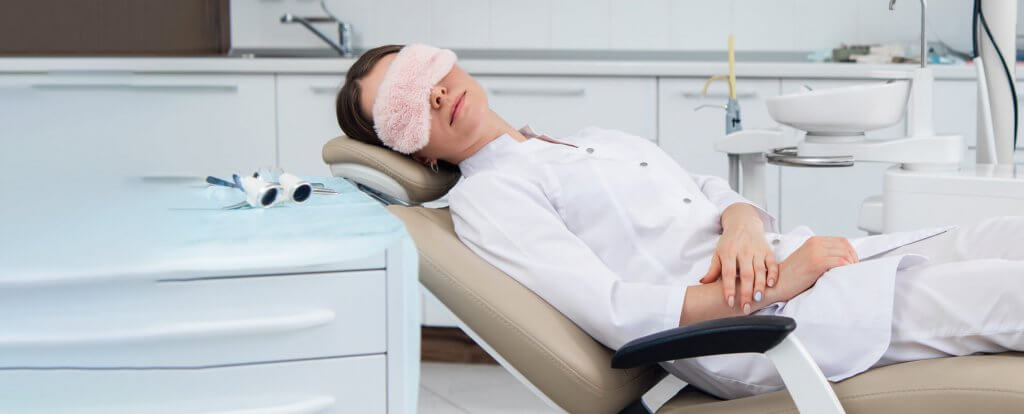Sedation dentistry enables completely painless execution of complex and lengthy dental procedures, as the patient remains completely unaware of the process due to being under deep sedation. This is particularly beneficial for those who require significant dental restorations or experience fear and anxiety related to dental treatments. In this article, we will present everything you need to know about sedation dentistry. Of course, the decision should not be made solely by the patient but in collaboration with the treating dentist, who can answer any questions prior to the intervention.

What is needed for sedation dentistry?
Sedation dentistry is always part of a personalized treatment plan in our clinic.
It requires an experienced anesthesia team (typically a specialist and an assistant) equipped with the necessary tools, as well as an equally experienced dental team. The role of the anesthesia team is to ensure the patient’s sedation, maintain optimal deep sleep, and finally, wake the patient up by administering the appropriate sedatives. The dental team performs the necessary procedures during sedation, ensuring efficient work while keeping the sedation time to a minimum to maintain the quality of treatment.

How does sedation work?
Sedation refers to an artificially induced state of deep sleep using medications. The patient is completely unconscious during this time and does not perceive any pain or discomfort, nor will they have any recollection of the time spent in deep sedation.
The administration of sedatives is usually done intravenously through a cannula, but there are also gas state preparations that can be administered through a mask. The medication introduced into the body is a combination of sedatives, painkillers, and muscle relaxants, helping to relax the entire body.
During the intravenous administration of sedatives, the patient receives oxygen through a mask. A common method is for the anesthesiologist to ask the patient to count backward from ten, typically only reaching five or so, as the patient in the dental chair closes their eyes and peacefully falls asleep.
During sedation dentistry, the patient is continuously ventilated, preferably through the nose, while physiological indicators such as blood pressure, pulse, blood oxygen levels, and body temperature are continuously monitored. This is the responsibility of the anesthesia team, allowing the dental team to fully focus on the treatment.

What is the difference between sedation and local anesthesia?
While sedation refers to the aforementioned state of deep sleep induced by an anesthesiologist, local anesthesia simply involves numbing a specific area using an injection into the gums, administered by the dentist.
During local anesthesia, the patient remains awake, fully aware of their surroundings and the dental procedure taking place. They know what is happening to them and can respond with words or gestures. However, they do not feel pain in the area of the mouth where the injection was given.
In fact, there is no dental procedure that technically requires sedation, as everything can be done with local anesthesia alone. Sedation may be justified based on the patient’s comfort level, as they may express a preference to be completely unaware during the procedure due to anxiety or fear while in the dental chair.
Therefore, sedation dentistry provides a solution for those who fear dental treatment, allowing for problem-free execution of complex procedures, such as those required for full mouth restorations.